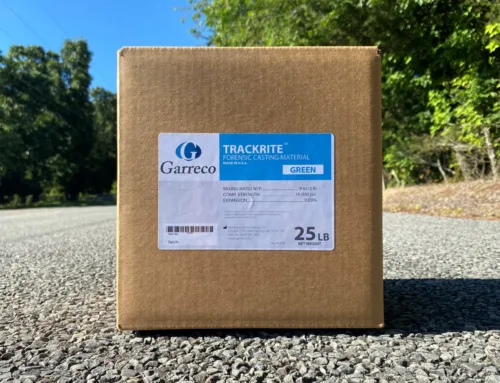The goal of orthodontic treatment is a good bite — meaning straight teeth that mesh well with the teeth in the opposite jaw. A good bite makes it easier for you to bite, chew and speak. This can enhance your dental health and your overall health and improve your self-esteem.
Patients with braces face a unique set of challenges during their treatment. There are specific guidelines for foods that can be eaten and techniques for maintaining proper oral hygiene. Even patients who follow all of the prescribed guidelines will occasionally encounter an unexpected problem with their braces. Sometimes a bracket or band will become loose. Sometimes a wire will break or stick out from the brackets or bands. Sometimes a wire can even detach from the brackets. Always call our office if you encounter any of these problems but often a temporary solution can be achieved using orthodontic wax. Every patient is given a box of this wax when they get their braces and it is sold in most drug stores and supermarkets.
Orthodontic wax is a product that will help make your braces treatment go more smoothly… literally! Read these FAQs for answers to our most commonly asked questions about orthodontic wax.
What is Orthodontic Wax?
Sometimes called “Relief Wax”, orthodontic wax is ideal for fast, temporary relief of irritation caused by fixed brackets and dental appliances coming into contact with the soft tissue inside the mouth.
Orthodontic wax is a natural wax product that protects the inside of your mouth (in particular, your cheeks and gums) from friction caused by your braces.
Orthodontic wax has been formulated to relieve discomfort by adhering to orthodontic appliances such as braces and wires and to the auxiliary hooks and ligatures. Orthodontic wax is recommended by dental professionals for relief from the pain and irritation caused by orthodontic appliances coming into contact with the soft tissue inside the mouth. Orthodontic wax protects the gums and the linings of your cheeks and lips, providing a comfortable barrier from the sharp ends of wires and pointed appliance parts. Orthodontic wax is also suitable for patients wearing partial dentures where wire clasps may be causing discomfort, sore spots, or abrasions. Orthodontic wax for personal use is often packed in a convenient, small container that is ideal for both at-home and outside-the-home use. Designed to fit easily into your pocket, purse, or backpack wherever you may go. Apply Orthodontic wax to relieve discomfort and soreness caused by orthodontic appliances.
What is Orthodontic Wax made of?
Orthodontic wax is typically made of natural waxes like beeswax, paraffin wax, or carnauba wax. It also usually contains certain fillers and modifiers, and certain types also have flavoring added.
All formulations of orthodontic wax include natural, non-toxic waxes. Some may contain a percentage of carnauba or beeswax or might have added flavoring. Most contain paraffin and are tasteless. They are designed to be firm at room temperature and pliable at body temperature. Wax is completely safe if swallowed in small quantities.
Where can I find Orthodontic Wax?
Orthodontic wax can be purchased at most well-stocked pharmacies, or you can order it from various retailers online. You can also pick some up at our office!
How often should Orthodontic Wax be applied?
As often as you need. You will probably apply it more frequently at the start of your orthodontic treatment because your mouth will not be used to the braces yet. You may also apply it more frequently after adjustment appointments.
Summary: Use clean hands, to roll some dental wax into a ball. Brush your teeth, then dry off your braces. Press the wax over the bracket or wire and rub it in place. Be sure to reapply the wax regularly, especially after meals.
Can you wear wax on braces while sleeping?
It is fine to sleep with wax still on your braces. The wax is non-toxic (safe to swallow) and wearing it can be beneficial in ensuring that no injury occurs to your mouth during sleep, especially when new to wearing braces.
Can you reuse Orthodontic Wax?
Orthodontic wax is not that expensive (your orthodontist may even give it to you for free), so there is no point in reusing it. Once you have put it on the brackets it will eventually crumble and fall off, so if you try to reuse it won’t have the same effect and it will fall off easier. In most cases, you can simply call your Orthodontist and request another compact of ortho wax if you run low.
What does Orthodontic Wax taste like?
Naturally, orthodontic wax is flavorless, but some have flavors added in, usually mint.
Is Orthodontic Wax safe to swallow?
Yes, it is! Orthodontic wax is non-toxic and safe for consumption. It’s made this way because, of course, you have to put it in your mouth. In fact, orthodontic wax is meant to be swallowed; over time, saliva in your mouth causes it to wear off. So, no worries; it’s perfectly safe! Yes! Orthodontic wax is completely non-toxic and safe for consumption. That means if you swallow it inadvertently, you’ll be just fine. Still, we wouldn’t recommend having it for a snack

Can I eat or drink while using Orthodontic Wax?
Q – Can you eat with the wax on?
A – No, because the food will cause the wax to fall off. Instead, take the wax off before you eat anything, and then reapply it after you have finished eating and brushed your teeth.
Q – Can you drink anything with the wax on?
A – It would be better to take the wax off. Liquids can cause the wax to fall off. Probably not. Take the wax off and you can drink the water. There is no need for brushing your teeth if it is just water, so just dry the area in your mouth and reapply the wax.
How do I apply Orthodontic Wax?
Start by washing your hands thoroughly, and brushing your teeth. Next, roll a tiny piece of wax (just enough to cover one bracket) into a little ball. Gently press the wax onto the bracket or wire that is causing you discomfort, and massage it carefully into place. The wax should form a small bump over the offending bracket or wire, preventing further friction.
To figure out where to place the dental wax, lay your head down on your pillow and position your body as if you would while you sleep. Close your eyes and feel which parts of your braces are pressing uncomfortably against your cheek.
These are the parts of your braces you will want to cover with dental wax. So pull your stick of wax apart and generously apply it to the pointy parts of your braces.
PREP BEFORE APPLYING WAX
(1) When you first received your braces, it is likely that your orthodontist gave you a pack with some essential supplies. Dental wax should have been included in the pack. If you lose it or run out, you can easily buy another box from your local drugstore, or ask your orthodontist for some more (we recommend our OrthoWax compacts). You will probably find that your braces irritate the inside of your mouth most when you first have them, so they will require more wax. Over time, the skin on the inside of your mouth may toughen up and you may find you require less wax.
(2) Wash your hands. Scrub your hands with soap and water for at least 20 seconds, then dry them thoroughly. You don’t want to bring any bacteria into your mouth, especially if you have a cut or sore.
(3) Shape a small ball of wax. Pull off a little piece of wax from the pack and roll it with your fingers into a ball shape. You want it to be just big enough to cover the bracket or wire irritating your mouth. A blob the size of a popcorn kernel or pea will usually do the job. Roll the wax for at least five seconds. The warmth from your fingers will soften it and make it easier to use. Using too much wax may result in the wax falling off.
(4) Locate painful areas. Wax can cover up any area where sharp or rough metal is irritating your inner lips and cheeks. The most common places are the brackets on your front teeth and the sharp wires at the far back of your mouth. Pull your cheek out and look for any bright red or swollen areas, or gently probe your cheek to find tender areas. You should protect all of these before they develop into cuts, or get infected. If you’re having trouble seeing, use a metal rod or small spoon to push out your cheek.
(5) Brush your teeth. This isn’t completely necessary, but it may reduce bacteria buildup and keep the wax cleaner. At least remove any food stuck in the braces where you plan to apply the wax.
(6) Dry off your braces. Before you apply the wax, dry off your braces with a tissue. The drier the area is, the longer the wax will stick
HOW TO APPLY ORTHODONTIC BRACE RELIEF WAX
(1) Press the wax over the area causing the pain. Using your thumb and forefinger, press the ball of wax over the bracket or wire causing the pain. If the wire is at the back of your mouth, push as far as you can, then withdraw your thumb and use your forefinger and tongue to position the wax.
(2) Rub it in place. Rub your forefinger over the wax a couple of times to stick it in place. The wax should still stick out a little, forming a small bump.
(3) Allow the wax to work. Once you have applied wax to your braces, your mouth should heal itself quite quickly. The wax barrier stops the irritation and allows the mouth the time to heal any sore spots. As you become accustomed to your braces, you will find they cause less and less irritation and you won’t have to use the wax as often.
(4) Reapply the wax regularly. Keep some wax on you when you are out and about. Replace the wax twice a day, or whenever it starts to fall off. Do not leave it on for more than two days, as bacteria can build up in the wax.
The wax will pick up food as you eat. If the braces are too painful to let you eat without wax, replace the dirty wax after you finish your meal.
Take off the wax before brushing your teeth, or you’ll get wax caught in your toothbrush.
(5) Contact your orthodontist if the pain persists. If you have tried wax and it has not helped, get in touch with your orthodontist. Persistent irritation and sores can become infected and lead to more serious problems. If you are having a really tough time with your braces, don’t be shy about getting in touch with your orthodontist. They will help make them more comfortable.
Will the Orthodontic Wax be noticeable to others when I talk or smile?
This is probably one of the questions that new patients are most concerned about. The truth is, orthodontic wax is pretty hard to see unless you look closely since it’s clear. Most of the time, other people won’t even notice that you are using brace relief wax.
How do I remove Orthodontic Wax?
The orthodontic wax will eventually wear away by itself. However, if you want to remove some wax that you have just applied, you can try using a small, sharp took like a proxy brush or a toothpick. Or, you could try regular dental floss. You can remove the wax when brushing your teeth and re-apply the dental wax afterward. You might want to wash your hands very well before you remove it, but then just gently take it off using your fingers. It should peel off easily.
Do you still have questions?
If you have more questions about orthodontic wax, please get in touch with the Garreco Sales Team by calling us at 800-334-1443.








Leave A Comment